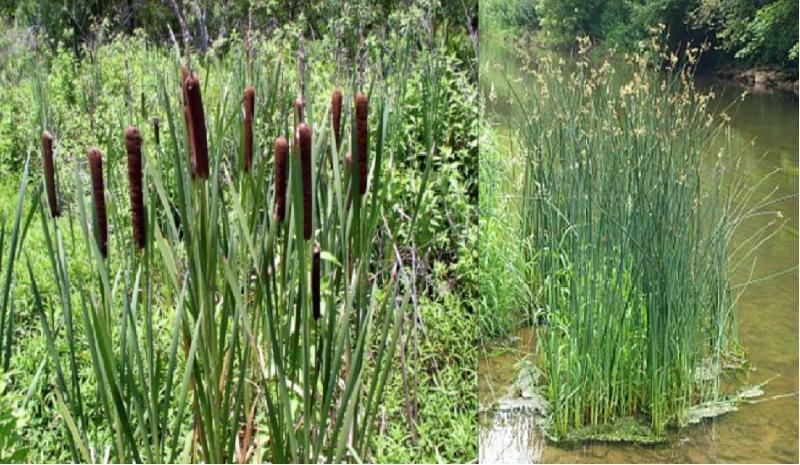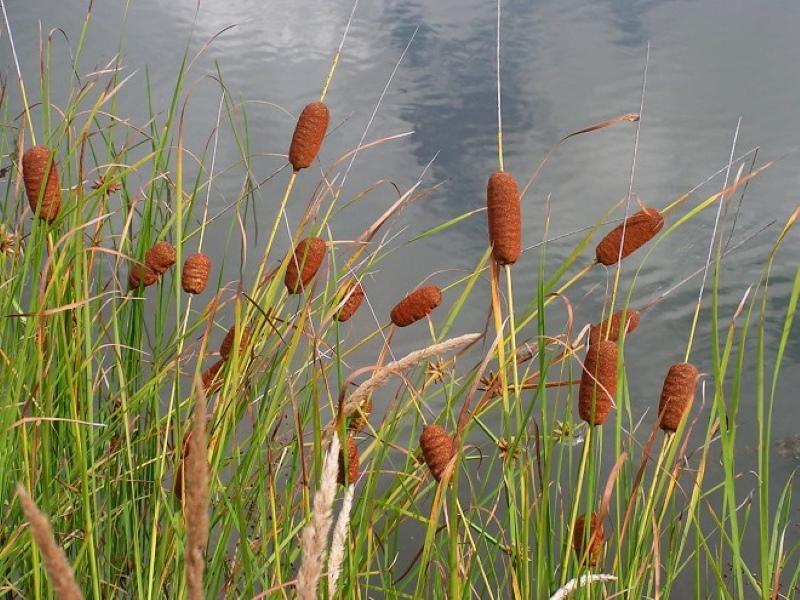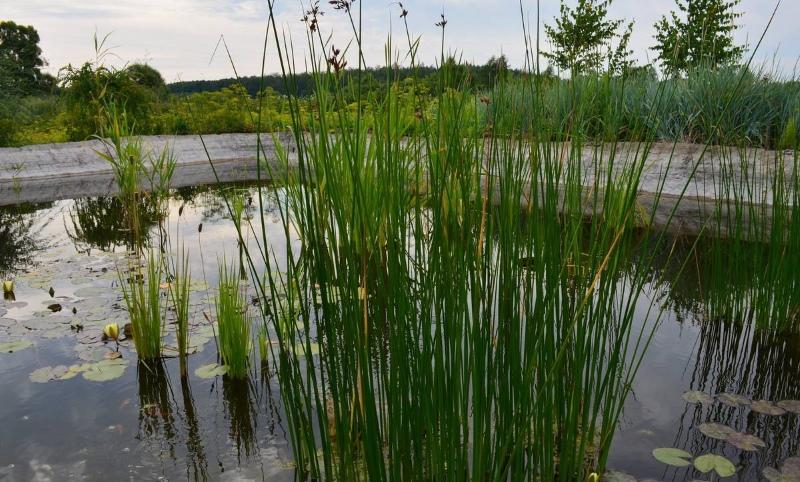Cattail and reeds - differences, photos or New acquaintance with the plants we are used to
 Perhaps, we are all accustomed to calling brown rocking chairs on tall strong stems growing near water as reeds. In fact, cattail is a common inhabitant of the shores of reservoirs. If you were also in the dark, we suggest finding out what cattail and reed are, the differences (photo) of these plants.
Perhaps, we are all accustomed to calling brown rocking chairs on tall strong stems growing near water as reeds. In fact, cattail is a common inhabitant of the shores of reservoirs. If you were also in the dark, we suggest finding out what cattail and reed are, the differences (photo) of these plants.
Botanical characteristics of cattail

And they called the culture cattail for the fact that matting is woven from its leaves and shoots - a coarse fabric. They are also used to make boats, furniture, baskets.
In June, flowering begins at the top of the stem of the cattail. This is how the famous rocking chair appears, which we consider to be a reed. The inflorescence is in the form of a cob, consisting of many bisexual flowers. At first it is yellowish, but when the ear ripens, it becomes soft and crumbles into fluff seeds.
What a reed
 To begin with, the reed is a plant from the sedge family. Depending on the species, it can be annual or perennial. And then there are lake species and forest species of culture. They grow not only in reservoirs, but also in swamps and flooded meadows.
To begin with, the reed is a plant from the sedge family. Depending on the species, it can be annual or perennial. And then there are lake species and forest species of culture. They grow not only in reservoirs, but also in swamps and flooded meadows.
Reed stalks are also high, up to 2.5 m, but bare. Narrow long leaves grow separately, peeping out of the water. The reed also blooms in summer: a lush but tough panicle up to 10 cm long, consisting of spikelets, blooms at the top of the stem.
Reed is also confused with reed - it also has an inflorescence in the form of a panicle, only it is soft.
Cattail and reed - photo differences
 So, having considered both characteristics, we can summarize how exactly both cultures differ:
So, having considered both characteristics, we can summarize how exactly both cultures differ:
- belong to different families (cattail - cattail, reed - sedge);
- have a different arrangement of leaves (in cattail they grow on the stem, in reeds - separately);
- form different inflorescences (rocking chair - in cattail, panicle - in reeds).
And one more important fact. A swamp lover, cattail itself contributes to the pollution of water bodies, while reeds reduce it.